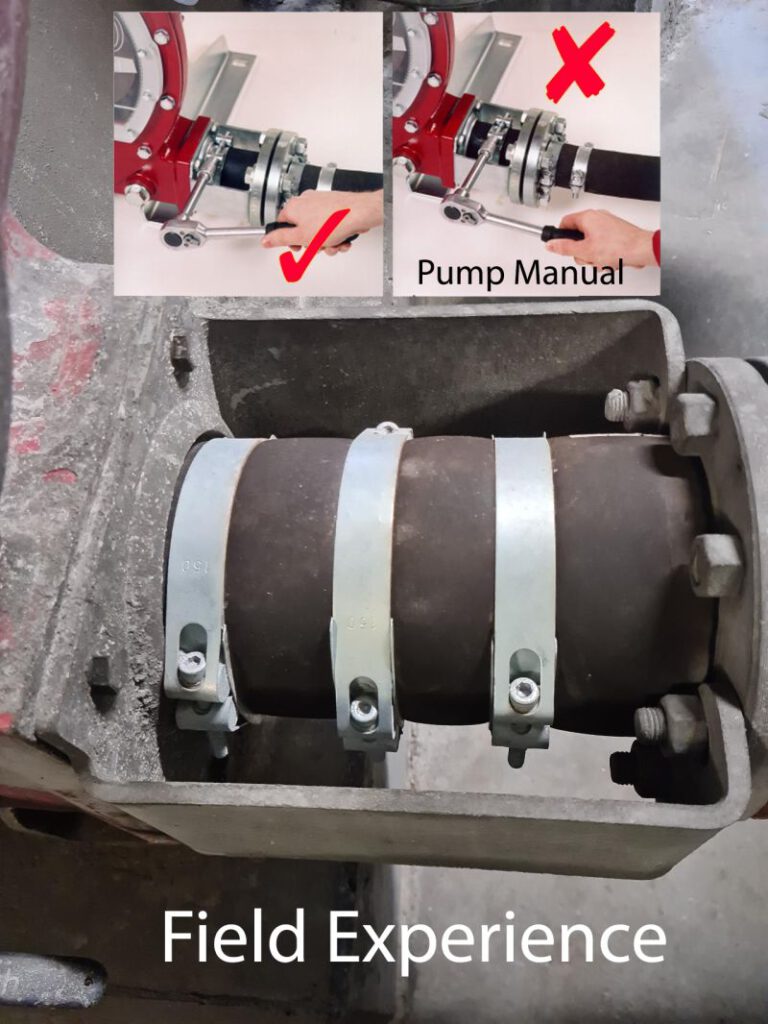Field Experience
In the world of industrial maintenance, the importance of correctly installing hose clamps cannot be overstated. Incorrect installation can lead to a host of problems, including significant financial losses due to damaged equipment, loss of production, and increased maintenance costs. This post aims to highlight the correct method of hose clamp installation, as illustrated in an official manual, and explain the reasoning behind it.
The Importance of Proper Hose Clamp Placement: Often, the significance of the correct placement of hose clamps is overlooked, leading to preventable failures. A correctly placed hose clamp ensures the integrity of the connection, preventing leaks and hose slippage. In the accompanying image from the official manual, the required position of the hose clamp is clearly marked, but without an explanation of its necessity. Let’s delve into the reason behind this specific placement.
Technical Explanation: The hose clamp must be positioned against the support bracket as indicated. This placement is crucial because the rubber of the hose tends to move under the pressure of the clamp. If the clamp is not correctly positioned, it can lead to undue pressure on the O-Ring, which is essential for sealing the pump and preventing lubricant leaks.
Field Insights and Solutions: In practical settings, we benefit greatly from the experience of plant engineers. They have developed effective methods to protect the pump from damage and prevent lubricant leaks. One such solution, as shared by Ronny Karlsson from New Boliden Garpenberg (link provided), is the strategic placement of additional hose clamps. This simple, low-cost method can significantly enhance the reliability of the hose connection.

Maintenance Reminder: An important maintenance tip to remember is that hose clamps need regular tightening. Over time, the rubber material ‘flows’, which can result in a change in the torque and looseness of the clamp. Regular checks and adjustments are necessary to maintain the integrity of the connection.
Conclusion: Correct hose clamp installation is a fundamental aspect of maintaining the efficiency and reliability of industrial equipment. By adhering to the guidelines shown in the official manuals and incorporating the practical wisdom of experienced engineers, we can avoid costly failures and downtime. Regular maintenance, including the tightening of hose clamps, plays a vital role in this process. Let this post serve as a reminder of these crucial practices that uphold the smooth operation of our machinery.
